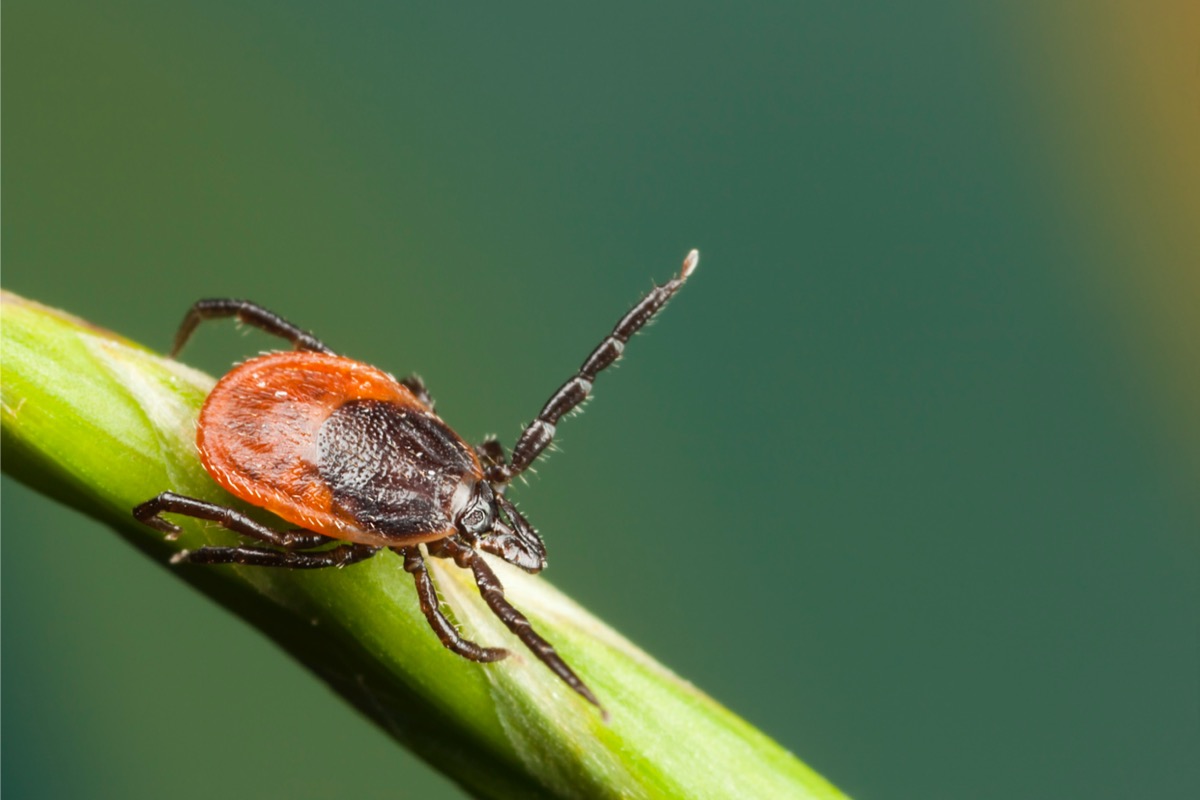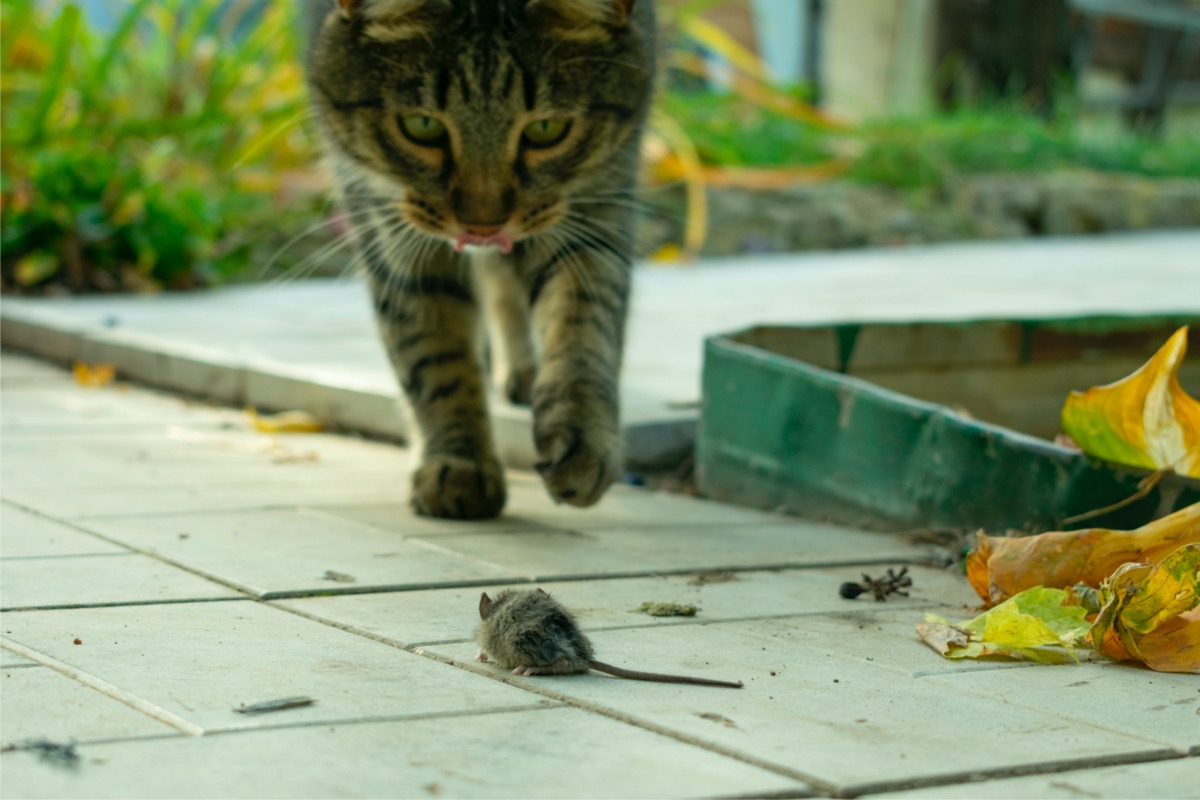We may earn revenue from the products available on this page and participate in affiliate programs. Learn More ›
Opening your home and your heart to a special pet—be your buddy of the feline or canine persuasion, or an animal more exotic—is to invite a lot of joy into your days. Naturally, there’s a fair amount of work involved, too, and one of the most important jobs is monitoring your animal friend’s health. To that end, it’s essential to know which pests are most attracted to your pet, the steps you can take to prevent pests from becoming a major problem, and how to handle the occasional infestation.
You might suspect that your pet has had a run-in with an insect or rodent if you witness these symptoms:
- Lethargy
- Change in appetite
- Vomiting or diarrhea
- Swelling of the mouth or face
- Rash or other skin irritation
- Excessive scratching, biting, or worrying a particular spot on their body
- Drooling
- Unusual behavior
Anytime you sense that something is “off” with your four-legged friend, listen to that intuition and contact your vet. Safe is always, infinitely better than sorry when it comes to your family members and their health.
1. Ticks

Of all the pests that plague our pets, ticks are probably the best known. Chances are you’re already accustomed to scanning your pet’s (and your own) skin after being outdoors, but you might not realize that ticks can live indoors, too! Take precautions to prevent a tick infestation, and know how to handle the insects if you find them on your pet. Tick bites can lead to serious diseases in both pets and humans including Lyme disease, Rocky Mountain spotted fever, and ehrlichiosis. Cats are less prone to tick-borne ailments, but they can contract cytauxzoonosis, an infectious disease that’s often fatal.
RELATED: 9 Signs You Have a Pest Problem in the Garden
2. Fleas

Fleas are another familiar nuisance. As with ticks, fleas affect humans and their furry friends alike. One mating female flea can produce as many as 20 eggs per day; that’s 20,000 adult fleas in just two months. That, along with the fact that they don’t actually bite victims but instead suck their blood, makes them especially vexing for young cats. A bitten kitten can lose so much blood to a feeding flea that it can become anemic.
Another problem that fleas present is that they can transmit tapeworms. The most likely concern posed by these parasites is infection, which occurs when itchy cats use their sharp claws to scratch, breaking their skin in the process.
Luckily, there’s a variety of effective flea treatments available to keep your home flea-free, including sprays and foggers,
3. Mice

You’d be forgiven for assuming that it’s the other way around, but mice do represent a real risk to cats (and, by extension, humans). Along with their larger cousins, rats, mice can carry parasites like toxoplasmosis and roundworm, bacteria like leptospirosis, and hantavirus—a family of viruses that are largely propagated by rodents.
Another good reason to keep an eye on your mighty mouser? Fleas. All rodents are common vectors of bugs with annoying, itch-inducing bites.
4. Rats

While you might think Mittens is providing all the pest control your home needs, it’s best to bypass the feline middleman entirely and call in an exterminator to handle any matters relating to mice or rats. It’s important to get professional help since rodenticide is toxic not just to its intended targets, but to other animals as well.
As excited as cats can get about hunting mice, cats aren’t adept at catching rats; in many cases, they won’t even attempt the hunt. It isn’t all that likely for your kitty to encounter Rattus rattus or Rattus norvegicus, but if they do cross paths, a rat’s bite is likely to be more perilous than that of a mouse.
5. Mosquitoes

Mosquitoes are yet another pesky pest that can bother everyone in the house, regardless of species. Their high-pitched whine is aggravating, their bites are intensely itchy, and they can transmit diseases such as heartworm, equine encephalitis, St. Louis encephalitis, and West Nile virus.
Hairless animals like Sphynx cats or Xoloitzcuintles (a Mexican hairless dog breed) are more vulnerable, but while an animal’s fur may deter mosquitos, it won’t defend against them entirely.
Make sure you’re not inadvertently inviting mosquitos to stay a while. If they’ve already made themselves at home, try some natural solutions to repel them safely.
6. Botflies

What’s black and hairy and looks like the result of a torrid affair between a housefly and a bumblebee? That’s not a joke, and it’s probably not an easy guess for most folks, either, but the answer is “botfly.”
This lesser-known pest prefers rodents and wild rabbits, but botflies (aka Cuterebra flies) can also infect our furry friends, especially when they’ve been romping around outdoors in grassy areas. When botfly maggots work their way under a pet’s skin, a serious infection can result, leading to fever, trouble breathing, seizures, circling or dizziness, and even blindness. The botfly larvae must be removed surgically, so keep your pets away from rabbit warrens and rodent nests, and inspect their skin after every outdoor jaunt so you can nip this nasty situation in the bud.
7. Stink Bugs

Dogs’ affinity for smelly food (and non-food, like your old sneakers, litterbox leavings, or even their own poop) is well documented, so it’s not out of the question that they might snack on the occasional stink bug. No serious harm will come to a pet if they ingest one of these odiferous insects. However, upset stomachs, vomiting, and diarrhea may result. Plus—well, blechhh.
RELATED: These 13 Pests Do the Most Damage to the Home
8. Mites

It’s pretty easy for pets to pick up one of the many varieties of tiny parasite known as mites. Here are some of the signs that you mite observe if your pet is having an issue with these irritating critters:
- Hair loss, which can be patchy or all over
- Patches of red, angry-looking, or scabby skin
- Excessive scratching
- Symptoms related to bacterial or fungal infections
Although tiny mites are visible to the naked eye, so it’s not a bad idea to part your pet’s fur and check for any stowaways as a matter of course. Mites present only a mild problem compared to other pests, but they can make your pet miserable with itching and irritation.
9. Worms

Worms are a commonplace woe in domestic animals, but don’t let their ordinary nature fool you into thinking they’re not a serious threat to your pet. These wiggly parasites can be fatal to pets in extreme cases. Even those that don’t pose great harm can make your pet miserable, so don’t skip out on preventative worm treatment.
One thing of note about worms is that they can harm your pets behind the scenes with no outward symptoms. There’s no telling if a healthy-looking canine or feline might be harboring them. Discuss the best ways to fend off roundworms and other culprits with your vet.
10. Bedbugs

The good news? Bedbugs aren’t nearly as prevalent a pest as some of the others we’ve discussed, such as mites, fleas, and ticks. The bad news is that if bedbugs are in your home, you’ve got a heck of a hassle on your hands.
Bedbugs have all the attributes necessary to infect a space in short order: They can move fast, jump far, and hide in the smallest of crannies. Bedbugs also make themselves at home in plenty of places, and can travel the world by hitching a ride on a pet, purse, backpack, book, or tote.
You will likely need a professional exterminator to tackle a bedbug infestation, in addition to washing just about every fabric item in the house. Bedbugs will bite cats and dogs if they’ve exhausted all options for a meal of human blood, with severe itching and dermatological issues as the result.
RELATED: 10 Tiny Bugs in Your House and How to Get Rid of Them
11. Lice

Our last pest, lice, is a bit pickier about sustenance than bedbugs. There are several varieties of louse and they’re all specific to a particular host, or even a body part. So human lice cannot trade places with cat or dog lice, or vice versa.
Dog and cat lice can lead to itching, scratching, and skin irritation; dry or matted fur; loss of fur around the ears, neck, shoulders, and rectum; anemia; lethargy; and weight loss. Infection of broken skin is a common complication of a louse infestation in an animal.

